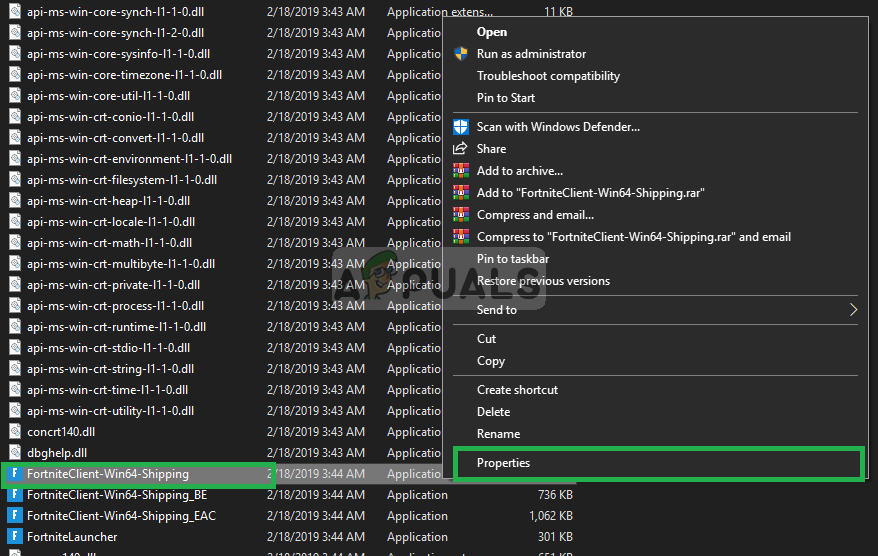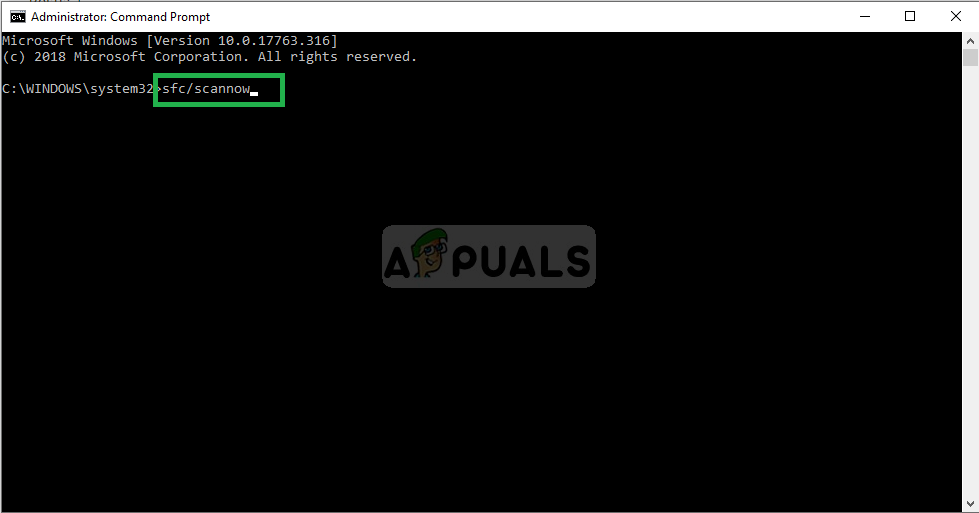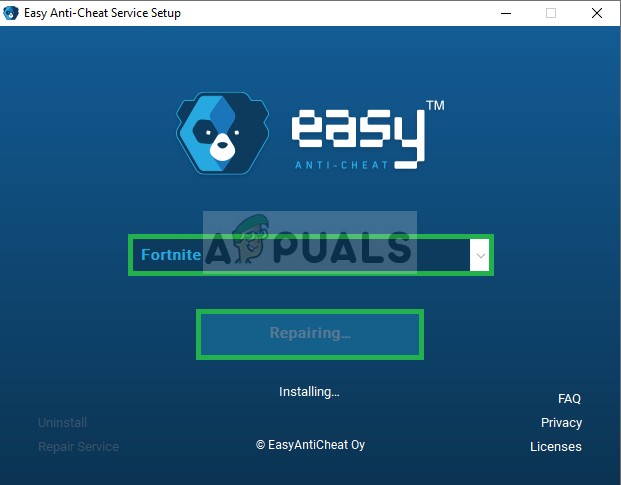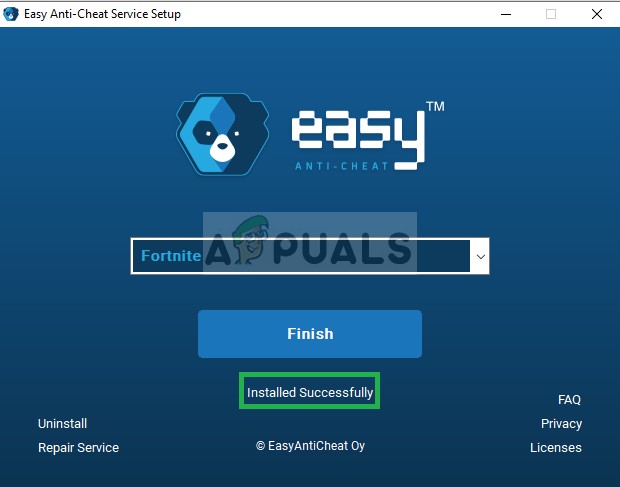Fix: Fortnite Won’t Launch
Fortnite is an online video game developed by Epic Games and released in 2017. Fortnite Battle Royale became a resounding success, drawing in more than 125 million players in less than a year and earning hundreds of millions of dollars per month, and since has become a phenomenon in the gaming scene. The game earned more than 2 billion dollars last year alone.

However, quite recently a lot of reports have been coming in of the game not launching through the launcher neither through the direct executable, the game does not give any error message either. Therefore, in this article, we are going to tell you about some of the reasons due to which this error can be triggered and provide you with viable solutions in order to ensure complete eradication of the problem.
What Causes the Fortnite to not Launch?
There are a number of reasons which might be triggering the problem. Some of the most common ones are:
- Missing Files: It is possible that some important files that are necessary for the game to function properly are missing. This problem can also arise due to the files being corrupt.
- EasyAntiCheat: The EasyAntiCheat service is a program that is used by the developers to prohibit any sort of hack or mod to the game. If that service does not run properly the game does not launch.
- Administrative Privileges: Another common cause of the problem can be due to the game not having enough privileges in order to run correctly. The game needs certain permissions in order to write/read files on the computer if those permissions are not granted you may experience problems with launching the game.
Now that you have a basic understanding of the nature of the problem we will move on towards the solutions.
Solution 1: Providing Administrative Privileges
As explained before if the game lacks these privileges some components of the game have a problem working efficiently so in this step we will make sure that the game has every privilege that it needs in order to work correctly for this
- Open the folder in which you downloaded Fortnite
- Navigate to
FortniteGame\Binaries\Win64
- Right-Click on FortniteClient-Win64-Shipping and select Properties

Right-Clicking on the game icon and then clicking on properties - Now click on Compatibility and make sure that the Run as Administrator box is checked.

Selecting Compatibility and giving the game administrative privileges - Now apply and click OK
- Repeat this process for FortniteClient-Win64-Shipping-BE, FortniteClient-Win64-Shipping-EAC, and FortniteLauncher.
This process should solve any problem due to insufficient permissions if it does not move on to the next step.
Solution 2: Verifying Anti-Cheat Driver.
The “sfc /scannow” command will scan all protected system files, and replace corrupted files with a cached copy that is located in a compressed folder at %WinDir%\System32\dllcache. This will delete any miss-spelled anti-cheat file and replace it with the one that was the last working correctly. For this process
- Click on the search bar in the bottom left-hand corner and search for “Command Prompt”

Command Prompt Windows 10 - Now Right-Click on the Command Prompt icon and click on the “Run as administrator” option.
- Now in the Command Prompt type “sfc/scannow” and press Enter

Typing sfc/scannow in the command prompt - Now, wait for a few minutes as this process takes some time to complete.
- Close the command prompt and restart your computer
- Now try to run Fortnite and see if your issue is resolved.
Solution 3: Repair the EasyAntiCheat Service
This is the Anti-Cheat service used by the game to recognize cheaters and hackers. It actively scans your setup for anything which could give you an unfair advantage over your opponents. However, sometimes this service gets broken and you might need to repair it yourself.
- You can search for the game’s main executable by clicking the Start menu button or the search button next to it and typing “Fortnite”
- Right-click on the executable and choose the “Open file location” option from the context menu which will appear.
- The default folder for the installation is “C >> Program Files >> Epic Games >> Fortnite” but it depends on your computer’s architecture as well. You can also search for Fortnite after clicking the “Start menu” or the search button, right-click the first entry, and choose Open File Location.

- Once you are inside the Fortnite folder, navigate to “FortniteGame >> Binaries >> Win64 (or Win32 depending on your OS) >> EasyAntiCheat“. Inside you should see the “EasyAntiCheat_Setup.exe file“.
- Right-click the “EasyAntiCheat_setup.exe” file in the folder and choose the “Run as administrator” option from the context menu which will appear.
- Confirm any UAC prompts that the file wants to make changes to your computer and wait for its window to open.
- Inside the window, Select “Fortnite” from the list of available games and select “Repair Service“

- The “Installed Successfully” message should appear shortly afterward.

Installed Successfully message appears - Try to Launch your game and check to see if the error persists.
Solution 4: Verifying Game Files
In this step, we will verify the game files through The Epic Games Launcher and if a certain file is missing or is renamed it will automatically be downloaded and added to the installation directory of your game. In order to do this
- Open the Epic Game Launcher
- Click on Library and click on the gear icon by the Fortnite launch button

Clicking on the gear icon by the launch button - Now click on Verify and wait for the launcher to verify all the game files.

Clicking on the Verify button in the game options This process will clear any issue related to a missing game file, if this issue does not solve your problem then the last thing that you can try is to reinstall the game and the Epic games launcher.





